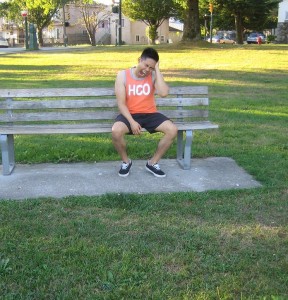Orthostatic hypotension is a drop in the blood pressure that arises upon standing from seated or lying position. With orthostatic hypotension, there is dizziness or lightheadedness or the person may even faint.
Orthostatic hypotension is usually mild, lasting for only a few seconds to minutes after standing, but this condition can be a symptom of serious problems. The most common cause of orthostatic hypotension is sudden lowering of the blood pressure. Adults are more susceptible to this condition than children and both males and females can be affected by this condition.
Symptoms of orthostatic hypotension
- Blurry vision
- Weakness
- Fainting or syncope
- Feeling lightheaded or dizziness when standing up
- Confusion
- Nausea
Feeling lightheaded or dizziness when standing up.
Causes
- Problems with the heart that can cause low blood pressure such as bradycardia, heart attack, heart valve problems and heart failure. These conditions prevents the body from responding fast in pumping more blood such as when standing up.
- Vomiting, fever, poor intake of fluids, performing strenuous exercises and severe diarrhea can result to dehydration. Being dehyrated can trigger the symptoms.
- Problems with the endocrine system such as Addison’s disease, hypoglycemia, and sometimes diabetes can damage the nerve that signals blood pressure regulations.
- Low blood pressure that occurs after meals which is usually prevalent among the elderly.
Treatment
- Eat smaller meals especially foods low in carbohydrate to prevent lowering of the blood pressure after meals.
- Take plenty of fluids to keep the body well hydrated and prevent the symptoms of low blood pressure. Avoid drinking alcoholic beverages to prevent worsening of the orthostatic hypotension.
- Perform exercises for the calf muscles before being seated and when moving out of the bed. Stay on the edge of the bed at least for a minute before standing to prevent dizziness. Perform exercises regularly to lessen the symptoms.
- Avoid bending from the waist. If picking up something on the floor, squat with the knees to get the object from the floor.
- Use compression stockings or an abdominal binder to lessen the symptoms.
- Slowly get up from a lying position to lessen dizziness and lightheadedness that happens with orthostatic hypotension. Inhale deeply for at least a few minutes and slowly stay on the edge of the bed before standing.
- Elevate the head slightly from the bed to prevent the effects of gravity.
- If symptoms start to begin while standing, cross the thighs in a scissor way and squeeze and place one foot on a chair and lean forward as far as possible. This movement increases the flow of blood in the legs to the heart.

